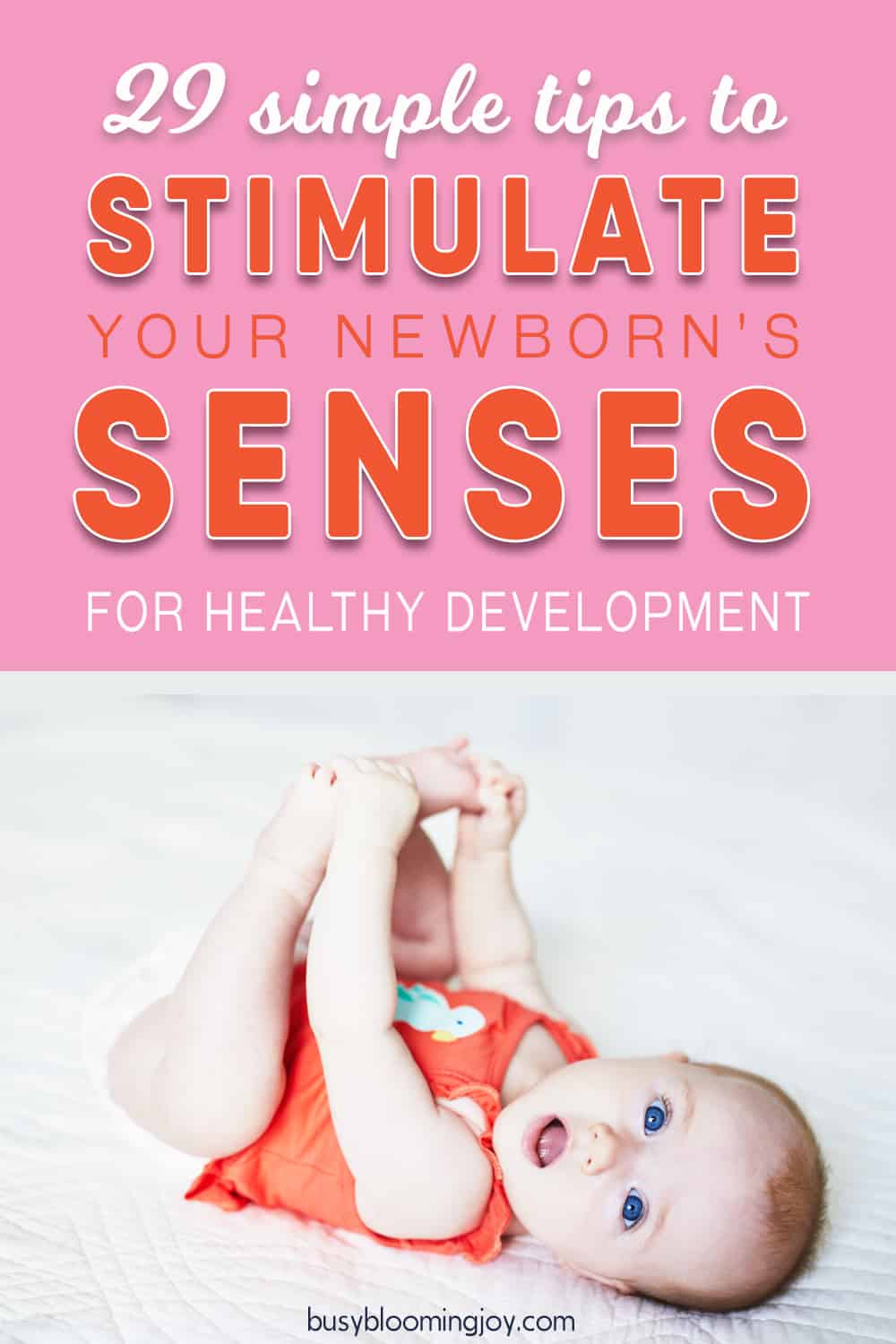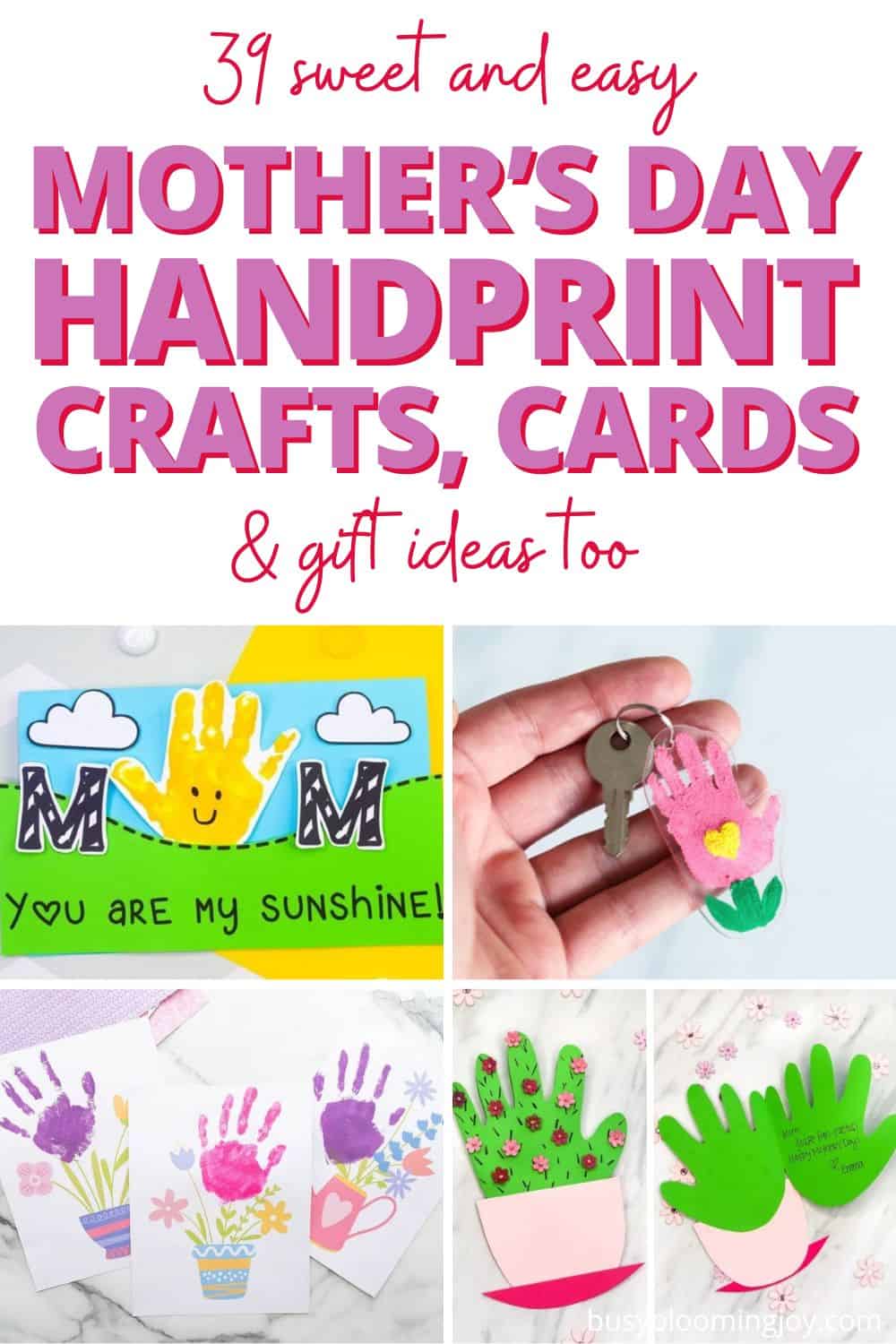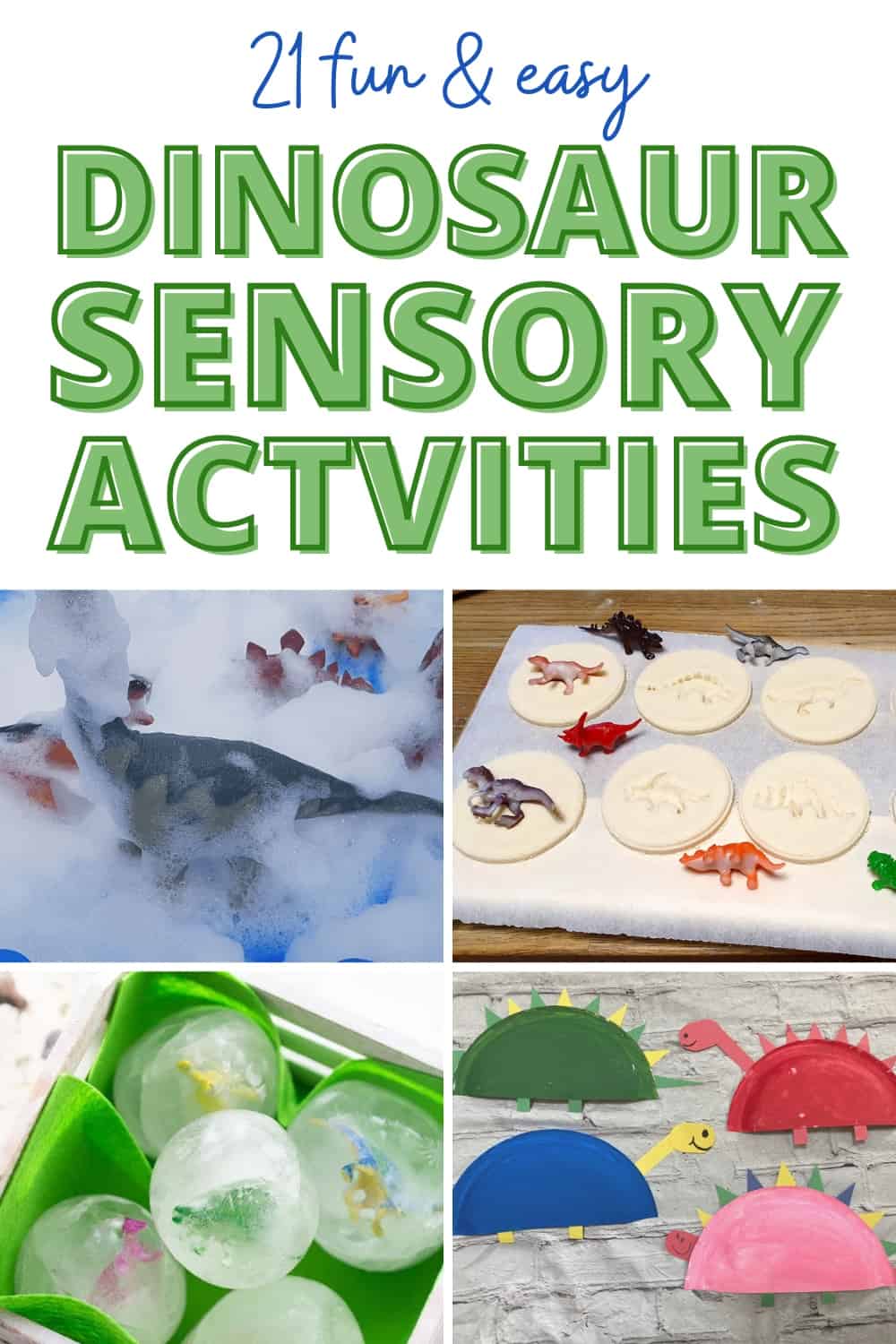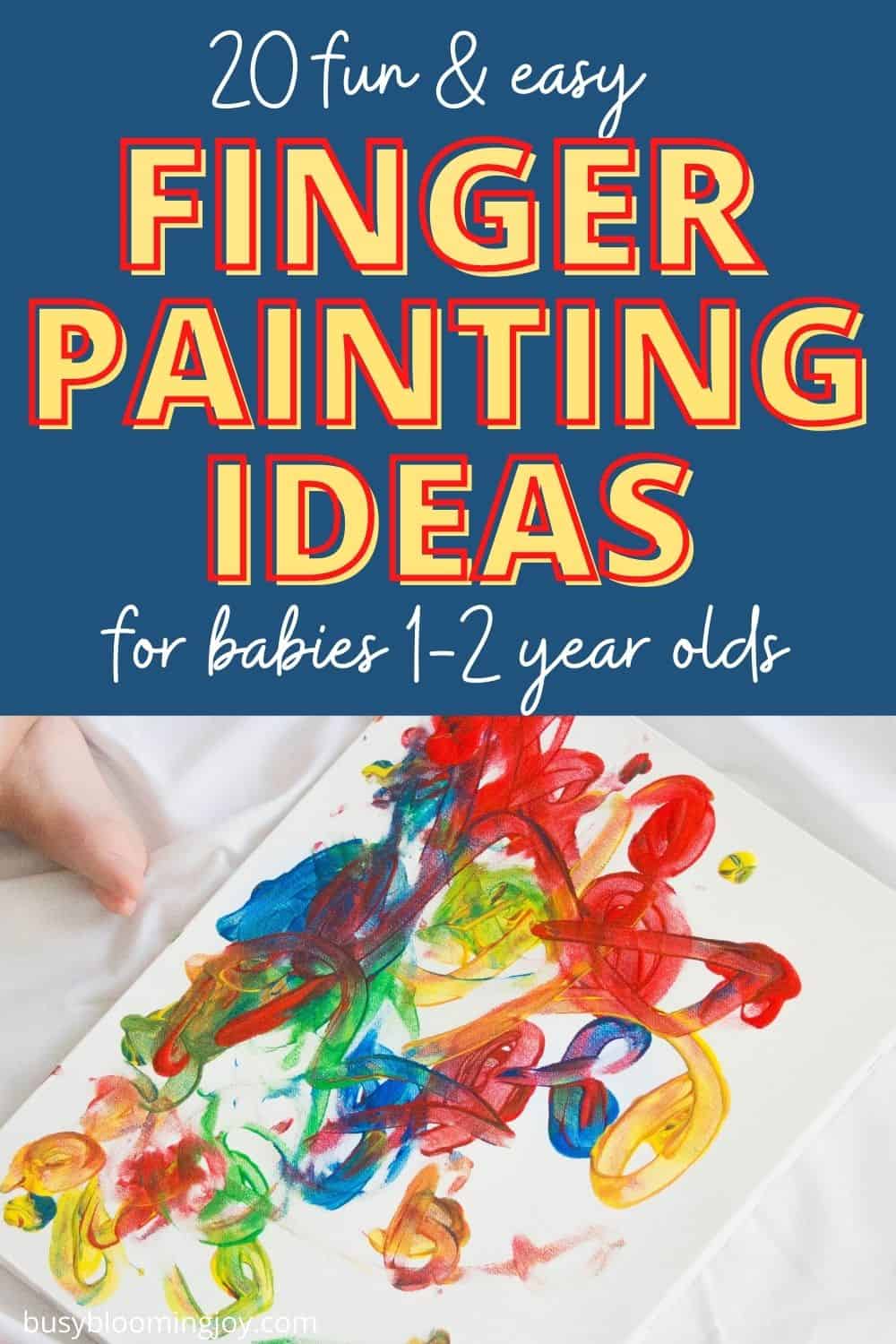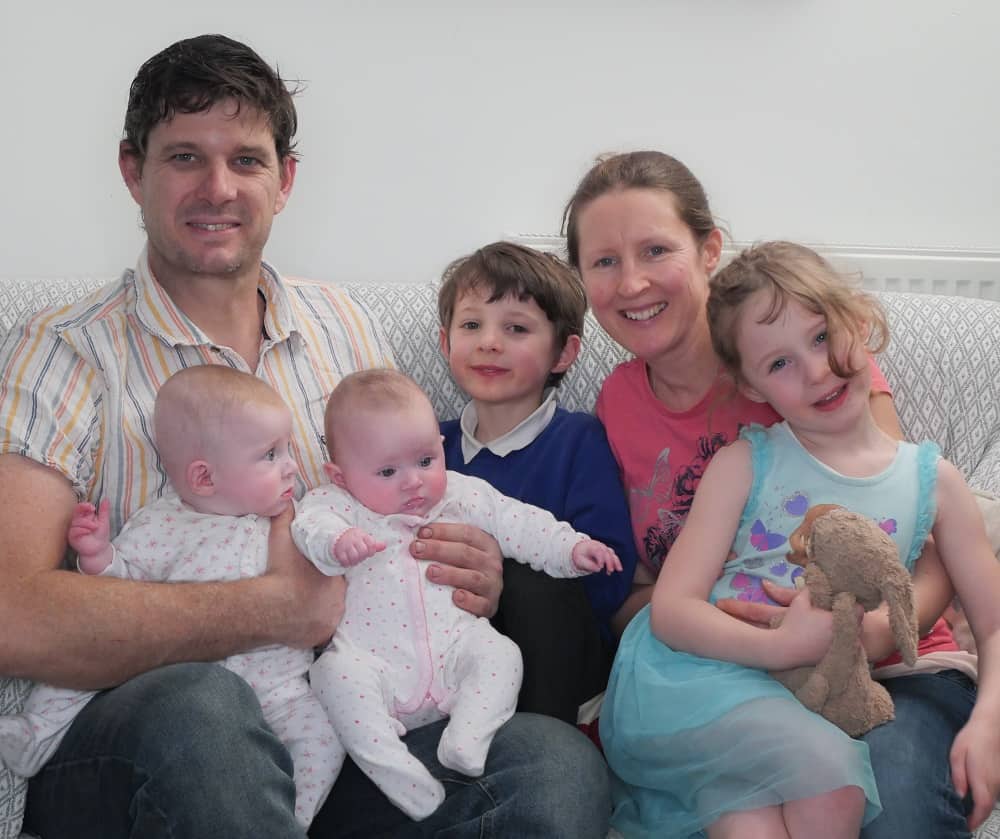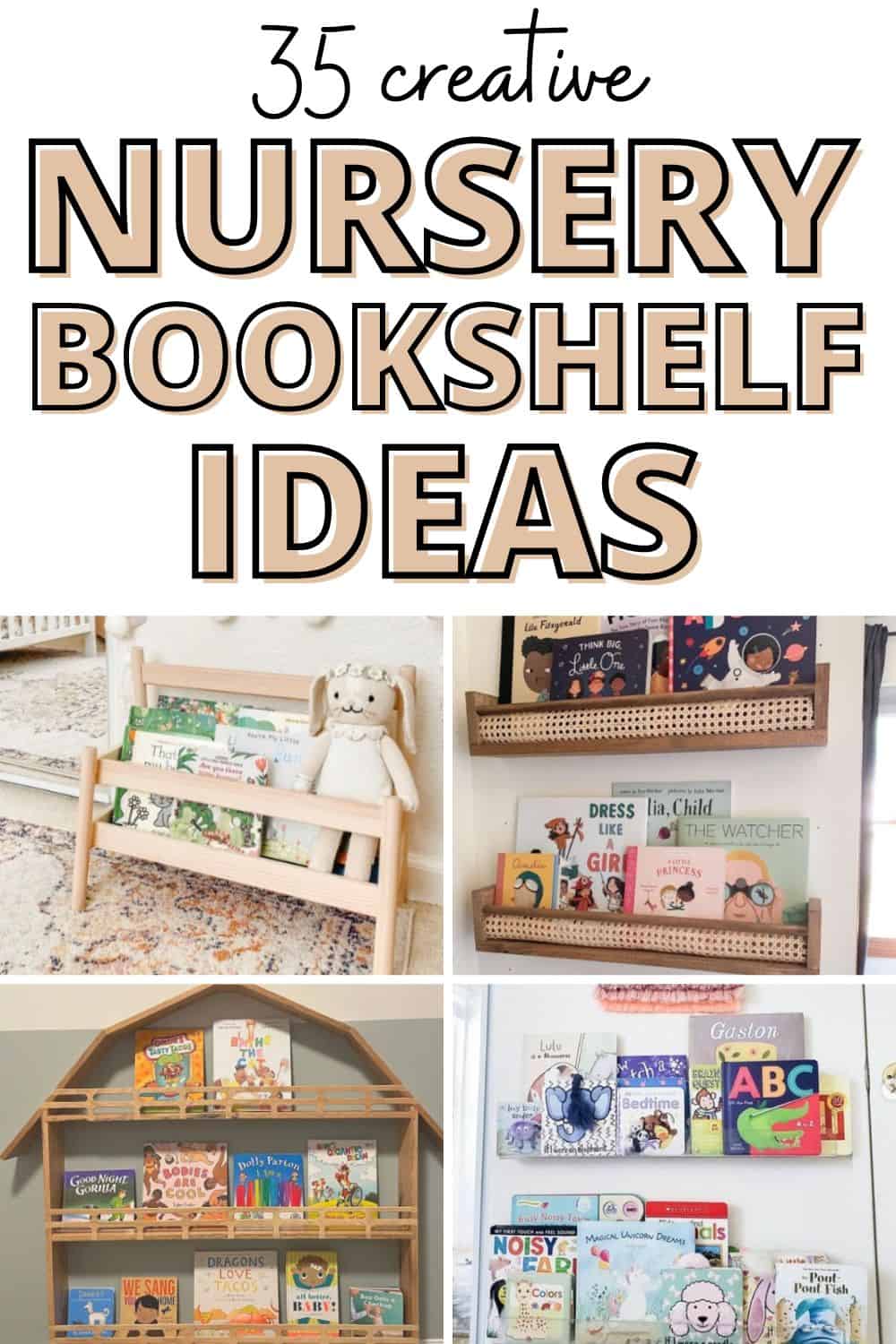In the first few weeks with your newborn, supporting her developing senses (aka interacting or playing with baby) probably won’t be top on your to-do-list.
If you’ve got the hang of breastfeeding, kept up with the laundry, fed yourself anything other than toast and chocolate and managed to sleep more than 3 hours straight then really, give yourself a pat on the back! Is there really more you should be doing?
Well, yes and no….
Your baby does need plenty of stimulation and of the right kind too… But panic not, chances are your baby is getting all the stimulation he or she needs in the mundane madness that is involved in looking after the little blighter, sorry, darling. (Apologies to all you US folk, I think blighter is British slang but I can’t think of a better alternative!)
But if you’re a little curious or have an urgent need to check your baby is getting the appropriate level of stimulation (yup, that was me) then you’ve come to the right place.
Or maybe you’re sitting at home twiddling your thumbs wondering – what the hell am I supposed to do with her all day?
As my dad asked (repeatedly, because he’s soooo funny like that), “When’s he going to do something?!” Hold onto your horses, dad, Alton Towers is a few years away yet…(4 years later it still is…)
(But I do kind of know where’s coming from…other than poop, scream, demand food… and very occasionally give you a giggle and a gurgle – just to remind you that’s all worth it – things do seem to move very slowly when it comes to your baby’s ability to actually ‘do’ something fun or interesting…I digress…)
This post covers your baby’s developing senses and tips to ensure he or she is getting the right kind of stimulation/activities/interaction (call it ‘baby play’ if you will) during the first 3 months of baby’s life – aka the newborn phase or 4th trimester.
Most are easy to try at home, free or cheap. Many you will be doing anyway.
Enjoy!
Table of Contents
ToggleWHEN to stimulate & interact with your newborn
In the first few weeks, your newborn will be sleeping such a lot of the time, that there really is no need to actively look to stimulate your baby. As you’ll see, your baby will be getting plenty of stimulation from being fed, carried about, bathed, cuddled and fed…
But as baby has a few longer awake periods (hopefully in the day) this is when you may want to try a few new and different ways to stimulate and interact with her.
Awake times will still be short though, so watch closely for signs that baby is getting tired and reduce stimulation and/or switch simulation for the calming types as appropriate.
Wondering what to look for when baby is starting to tire and become overstimulate? Check out this baby cues post here.
These other posts may also be useful:
- Newborn Sleeps All day? 10 fail-safe tactics to fix day night confusion fast!
- Baffled by how much sleep baby needs? Baby sleep chart to the rescue!

The sense of touch
In the close confines of the womb, an unborn baby receives plenty of touch stimulation, so this sense is well developed at birth. For this reason, plenty of deep pressure touch stimulation is exactly what your newborn will crave in order to feel secure.
So deep pressure touch stimulation, such as swaddling, a close hold during feeding and babywearing will calm and soothe baby. So just by doing these things, you’re providing plenty of touch stimulation.
While these types of touch sensation may irritate
- rough textures (unstitched seam on babygrow, fussy fabrics)
- soft touches (light tickles)
- a light breeze (blowing air)
- hot and cold touches (hot or cold hands, cool air)*
- unfamiliar touches (new people handling your baby)
*I think it goes without saying to watch the intensity of hot sensations for your baby and not to have baby in direct sunshine but just in case…
The importance of touch stimulation
Touch is the foundation block for movement (since baby first needs to develop awareness of her own body, which comes through touch) but is also important for bonding and other higher cognitive functions.
But touch stimulation isn’t just important, it’s a necessity; without it, development is severely compromised.
Research has found that, even with adequate nutrition, a lack of touch can lead to stunted physical development as well as inhibited emotional and intellectual capabilities (source).
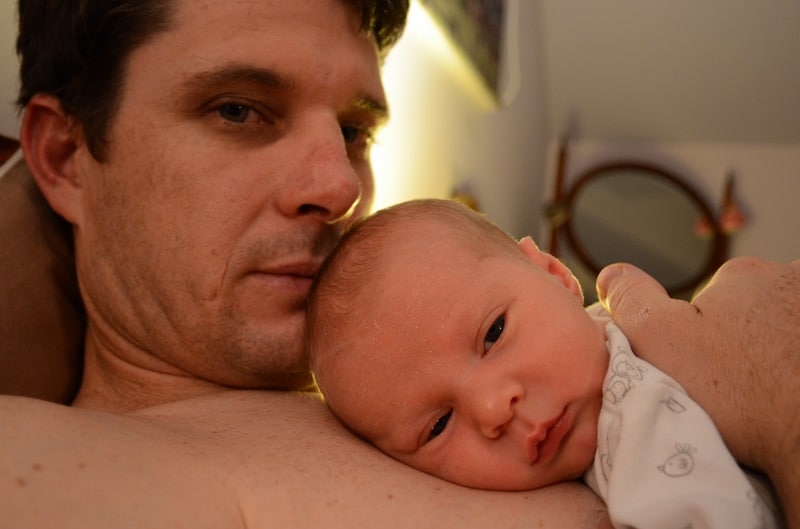
Tips for using TOUCH to support and encourage healthy newborn development
1 – Don’t save deep pressure touch for when baby needs soothing
Deep pressure touch is very effective when it comes to calming and pacifying your baby, so things like:
- swaddling
- babywearing
- skin-to-skin
- holding baby close when feeding etc.
But there’s no need to limit these types of touch sensation to when baby is upset or needs calming; these also provide plenty of healthy stimulation.
For example, your newborn will love the naked cuddles of skin-to-skin and it’s a fantastic way for the two of you to bond. Not only that, there are a whole host of well-researched benefits of skin-to-skin to baby, from helping to regulate temperature to a stronger immune system.
2 – Try a baby massage to stimulate in a calming way
Massage is another form of deep pressure touch that is both calming and stimulating, but unlike things like swaddling mentioned at #1 it cannot be used when baby is particularly fractious, overtired or overstimulated; baby needs to be fairly relaxed.
It’s another lovely way to bond with baby and, in terms of development, it can help baby develop body awareness which is necessary for the development of spatial perception.
Baby massage can also help with the discomfort of trapped wind or constipation. Read all about the benefits of baby massage here.
Here’s a great video with some pointers on getting started with baby massage…
NB: Don’t massage baby if in extreme discomfort, overstimulated or overtired – check this baby cues post to understand what behaviors your baby may show you if any of these are the case.
3 – Bathtime water fun
If baby enjoys bathing, gently pour water over her tummy. Be led by your baby on this – some babies enjoy water more than others.
You can also massage and stretch out your newborns arms and legs, with or without soap. (Don’t use soap on tiny babies as their skin is too sensitive.)
This is for the slightly older newborn who is content to lie in a bath chair.

4 – Lie baby on different textures
This is best done with baby just in a nappy in the warmer weather or after a bath in a warm room. Find different sheets and blankets with textures for baby to lie on.
The sense of movement (vestibular)
Like touch, this sense develops rapidly before birth due to the constant rocking motion of mom’s body which provides a lot of stimulation.
By the end of pregnancy, the vestibular system has developed to a point where it helps baby get into position for birth (clever, huh?!)
Gentle, rhythmical movements will calm and soothe your newborn, while irregular, quick and jerky movements will alert or even irritate.
The importance of movement stimulation to your newborn
As a newborn, movement stimulation is firstly about experiencing being moved. So for healthy development, you want to expose baby to movement as well as allow baby the chance to move. With this comes muscle tone, balance and coordination until baby becomes in control of her own movement.
So movement stimulation is necessary for the development of every single motor skill but it’s also important in the development of emotional skills and higher cognitive functions.

Tips for using MOVEMENT to support and encourage healthy newborn development
5 – Give baby freedom to move naturally every day
Lie her on her back so she can kick her legs about and stretch her arms.
6 – Try a few minutes of tummy time every day
Tummy time is crucial for your newborn’s physical development. It helps strengthen the muscles in the neck, shoulders, arms, and core. By lifting their head and pushing up with their arms during tummy time, babies develop the necessary strength for holding their head up, sitting, and eventually crawling.
Read more about the importance of tummy time here.
Start with just a few minutes at a time and, if your baby doesn’t like it, I’ve found the best position to start is with them lying on your chest, with you lying down. That way you’re close to them for support and encouragement.
Here are some different ways to encourage tummy time if your baby isn’t so keen.
7 – Minimise use of car seats (and other contraptions) that inhibit movement
This is related to the last one; your baby needs to move! Car seats and some other baby accessories do not allow and certainly don’t encourage any movement. The advice is to limit time in the car seat to 2 hours a day.
8 – Stimulate your baby’s sense of movement with full-body maneuvers
When baby is just a few weeks old this can be as simple as turning around slowly when you’re holding baby. Babywearing has this one covered too.
As baby gets a little older you can extend this to moving her from lying on her back to sitting up by holding her hands.

A much older baby may enjoy a bit of rough play (my son loved the feeling of almost being thrown up in the air (in reality, he didn’t even leave my husband’s hands….)
The sense of taste
From the second trimester, when swallowing starts, baby starts to experience the different flavors of whatever you’re eating (albeit very diluted).
At birth, a newborn’s sense of taste is thought to be better than an adults and memory for tastes is also good. Research has shown that babies exposed to certain flavors in the womb and while breastfeeding, show preference to these flavors at weaning (source).
The importance of taste
Taste is important for reflexes related to feeding (e.g. saliva secretion and the swallow reflex) but taste is also closely linked to emotion. For this reason, the sweet taste of breast or formula milk will soothe and pacify.
Tips for using TASTE to support and encourage healthy newborn development
9 – Expose your baby to different tastes
Obviously baby can only drink breastmilk, but exposing them to different flavors, both while in the womb and while breastfeeding will stimulate this sense.
In addition, babies have a good memory for tastes, so this exposure to flavor may influence their preference to certain foods on weaning.
Another reason to eat a wide, varied, healthy diet while pregnant and breastfeeding.
If you’re worried about certain foods making your baby gassy, fear not – there are actually very few that do.
So far only milk, egg, soy, wheat, corn and peanuts have been documented to cause an allergic/immune response in babies. You can read more on this here: My baby is gassy. Is it a sensitivity to dairy or something else?

The sense of smell
The development of smell
Like taste, a newborn’s sense of smell is incredibly acute, better than ours. It’s so good that research has shown that a newborn will show preference to mom’s milk over someone else’s just a few days after birth (source).
Even though baby is exposed to the different flavors and smells of the amniotic fluid while in the womb, this will be nothing compared to the hugely varied smells of the outside world, which will come as quite a shock to your little one’s system.
So your newborn will find familiar smells the most calming, so mom, mom’s milk, other regular caregivers, as well as their own smell.
New and different smells will stimulate your baby but can easily irritate. A particularly strong or unpleasant smell or too many new smells at once may cause your baby to suck, cry, or breathe more rapidly.
The importance of smell to your developing newborn
Smell has a direct connection to the emotional centers of the brain and so is very important in bonding and sexual attraction.
It’s the emotional link that gives smell the power to calm your baby.
Tips for using SMELL to support and encourage healthy newborn development
Your baby will be exposed to a huge variety of smells in the outside world without anything extra needed at this age. If anything you will want to keep new and overpowering smells to a minimum in order to ease the transition from the relatively neutral smells of the womb.
The sense of hearing
Baby sill start to detect sounds during the second trimester and may even start to recognize them during the third – by shifting positions, moving faster or slower in reaction to certain sounds.
A newborn’s hearing is as good as an adult’s and memory for sounds is good. At birth, your newborn will quickly recognize your voice and other sounds she heard while in the womb.
At around 3 months your baby will start to try and mimic sounds and coo; the first step in language development.
Gentle, rhythmical sounds help calm baby as does the dull consistency of white noise, while irregular sounds and loud noises may stimulate and irritate.
The importance of hearing stimulation
Hearing is intricately linked to language as well as higher brain functions, such as emotion.
For language development, regular exposure to the mother tongue is necessary during the first year
Babies are born with an acute sensitivity towards different sounds, allowing them to distinguish sounds that adults can’t. This allows a newborn to distinguish the huge variety of complex sounds that exist across all the different languages of the world.
During the first year, this sensitivity is lost as the brain tunes in to language heard on a regular basis, i.e. language spoken by parents and other regular caregivers.
At a year old, your baby will no longer be able to hear the unique sounds of other languages and without being able to distinguish them, won’t be able to vocalize them. (Source)
So hearing the mother tongue regularly is vital for optimal language development.
Good exposure to language enhances the development of language
The more words your baby and growing toddler hears, the more his understanding and therefore language will develop, but it needs to be in a social context, not the TV (source).
Music is thought to have a powerful effect on brain development
This is due to the rhythm of music, which may help develop simple patterns of thinking into more complex ones.
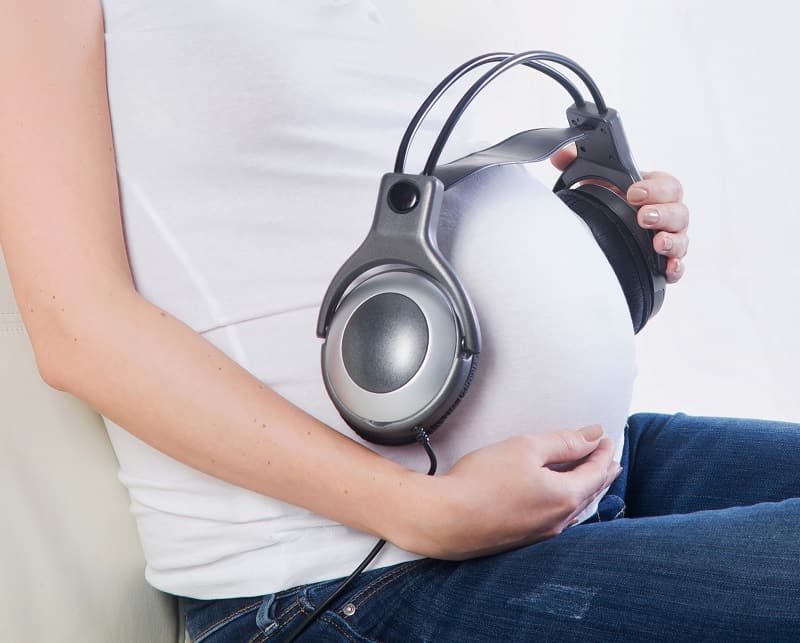
Supporting healthy development during pregnancy
Your unborn baby will hear your voice when in the womb so will already be getting exposure to language (so try not to make it too colorful!)
But if you want to go one step further you can play music to her by listening to it yourself and holding the speaker close to your belly (music recommendations coming up in the next section) or putting headphones over your bump, as in the photo above.
Not only does this stimulate her sense of hearing but using the same music in her first weeks and months of life will be very calming and reassuring to your newborn.
Tips for using SOUND to support and encourage healthy newborn development
10 – Bring on the baby talk
Firstly, talking to your baby is completely normal and a good thing. I had no problem with this having always talked to the dog etc but I know this doesn’t always come easily to everyone. But it’s a good thing!
As is the higher pitch you will find yourself using. This baby talk or ‘parantese’ might make you feel a little bit silly but it’s totally natural.
It’s this type of language that helps language to develop as it encourages your newborn to listen.
Your baby will also find your voice very soothing so use it to calm her at times of stress, such as new experiences for example, doctors appointments.
11 – Don’t go OTT on baby lingo…
Yes, use baby talk/parentese, but don’t go completely mad with cutesy language. Good language development comes from exposure to good language!
12 – Ensure regular exposure to the mother tongue throughout the first year
As mentioned above, hearing the intricate sounds of the mother tongue is necessary in order to develop good linguistic skills later. So if your baby’s regular caregivers speak your language there is no issue here.
This tip really only applies if your baby is in the care of a foreign speaker. If this is the case try to ensure regular exposure to the mother tongue when baby is back in your care.
13 – Try classical music to calm and stimulate
For calm and relaxation, music from the baroque period is said to be best due (Bach or Handel). This is due to the slow tempo and rhythm similar which is though to be similar to the Alpha rhythm of the brain.
I’ve enjoyed listening to classical music mixes at bedtime with all my babies. Or simply when we need to bring a bit of calm to the house (so on a daily basis with a 3 and 4 year-old!)
You can buy classical music for sleep or check out some of youtube’s free compilations.
Some classical music (e.g. Mozart) is more stimulating due to it’s fast paced nature. Try these when your baby is awake and alert to stimulate their hearing.
14 – Read, recite nursery rhymes and sing to your baby
This helps expose your baby to different vocabulalry and hear the rhyme and rhythm of poems/nursery rhymes.
15 – Imitate
When your baby starts to gurgle, coo, grunt and even squeal, imitate your baby and encourage ‘conversation’. This is the beginning of your baby’s speech.
16 – Help baby practice locating a sound with new sounds
You can do this with a baby rattle by shaking it close by, but slightly out of sight. Or use anthing that you can make a noise with, like teaspoons in a tupperware.
All you’re aiming to do is give your newborn a sound to turn towards.
The sense of vision
The development of vision
With almost zero light exposure in the womb, at birth, vision is poor and blurry and in shades of grey. Despite this a newborn will be able to recognize her mom’s face after just a few hours.
Focus is best at the distance between her face and yours while feeding (8-10 inches or 20-25 cm). Crossed-eyes are normal as baby tries to focus at different distances.
At first, vision is reactive – so baby will move her eyes in reaction to what’s happening around her.
At around 2 months baby will start to consciously move her eyes to follow objects or people within her field of vision.
Color recognition starts at about 4 months and by 6 months baby should be able to focus at any distance.
The importance of visual stimulation
There’s been a lot of research into the effects of visual deprivation; without adequate visual stimulation, the development of vision can be severely compromised.
But no need to panic, providing visual stimulation is very straightforward.
VISUALS that calm & VISUALS that stimulate
Soft pastels, muted colors and low lighting are calming, while bright colors and bright lights are stimulating.
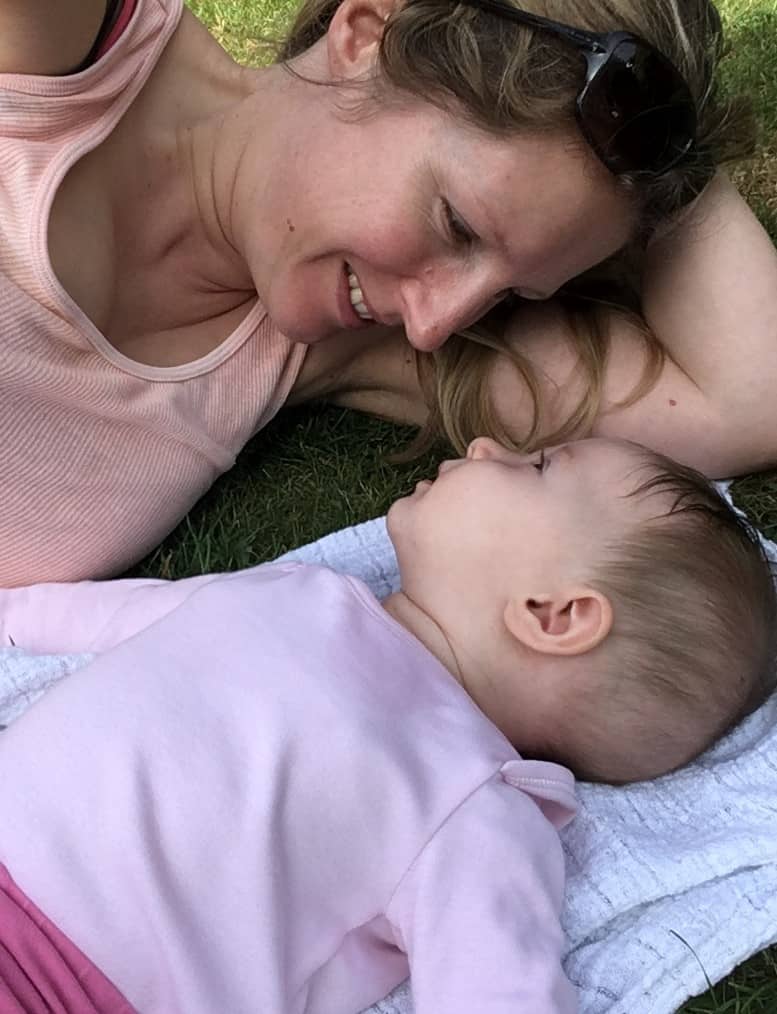
Tips for using VISUALS to support and encourage healthy newborn development
17 – Let your baby study your face
Your baby will love studying your face, particularly when they’re feeding. A newborn’s focus is best at around 23cm, the distance between your baby’s face and yours when breastfeeding. (If bottle feeding try to stick to this distance in the early days.)
S0 encourage focus by make funny facial expressions. Sounds odd and a little bit silly, but give it a go!
As she gets older you can encourage her to focus at different distances by moving closer or further away.
18 – Find a picture of a familiar face and put it where baby can look at it
You could put it next to the changing mat or hang it from the buggy so that baby can try to focus on it.
19 – Show your baby black & white images
To encourage focus, the higher contrast the image, the better. Hence the black and white picture books you may have seen, which are specially designed for babies.
However, you can easily draw some black shapes and patterns on white paper.
20 – Move objects slowly within her field of vision
In the first few weeks move objects from side to side 8-10 inches or 20-25 cm in front of her face. This encourages your baby to follow the object and helps develop eye muscles and therefore eye control.
As baby learns to focus at different distances you can do the same at different distances.
21 – Pin a bright color to your clothing when you’re feeding
As your baby’s ability to focus develops at different distances develops you can encourage this by giving her a focus point.
22 – Regularly change up mobile or other toys
Alternate the toys hanging from your baby’s mobile, play gym or pram or DIY some new toys. (Kitchen utensils can make an interesting alternative, especially metal ones that reflect light – just make sure they’re tied properly!)
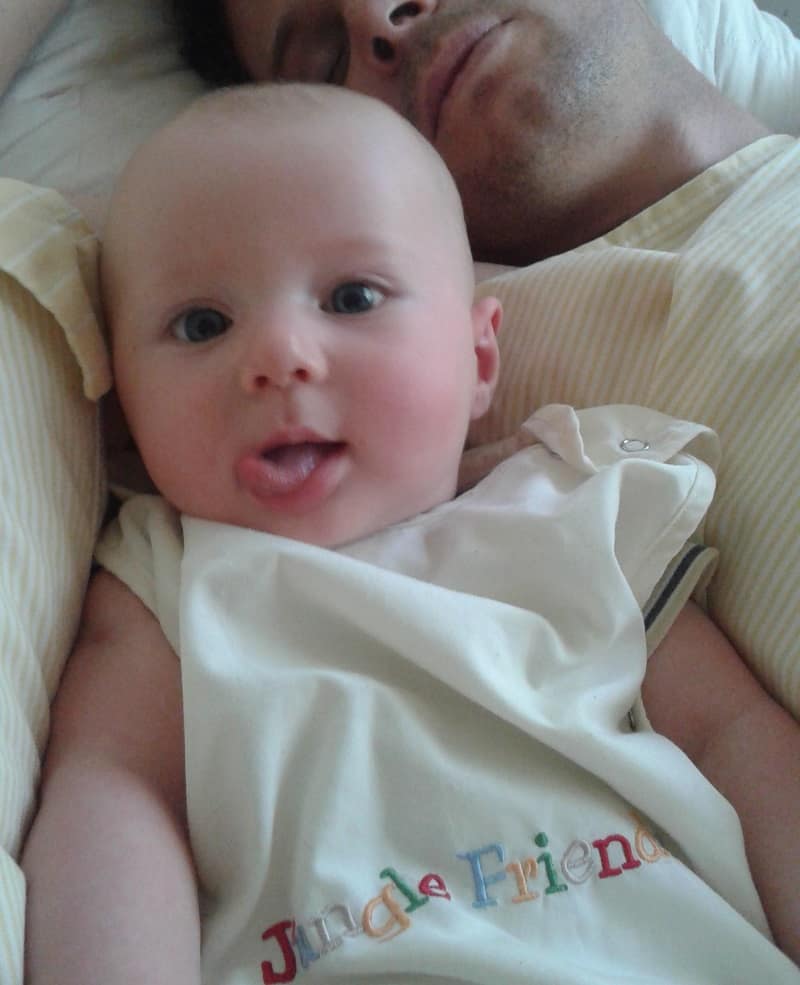
23 – Copycat tongue talk (or other visual ‘conversations’)
My son just loved to stick his tongue out from just a few weeks old so, naturally, I stuck my tongue back out at him. This quickly became a regular in our play repertoire.
It seems all babies love this “mirroring” conversation and from this develop the ability to imitate our facial expressions (source). So start adding in other expressions and noises and see how your baby responds.
24 – Sit baby up in a position to watch the world
When baby is old enough to lie in a more upright position she will get plenty of visual stimulation from watching the world around her. So prop baby up and let your baby watch as you go about your day-to-day chores.
In summary
I hope that’s shone a light on your newborn’s developing senses and the importance of the appropriate stimulation.
But stimulating these senses doesn’t need to be difficult or complicated. Just by feeding your newborn, holding her close, carrying her, bathing her, talking to her and settling her ready for sleep you will be giving her plenty of stimulation. And if you want to do a little more then hopefully you now have plenty more ideas to try.
Any queries, please let me know in the comments!


